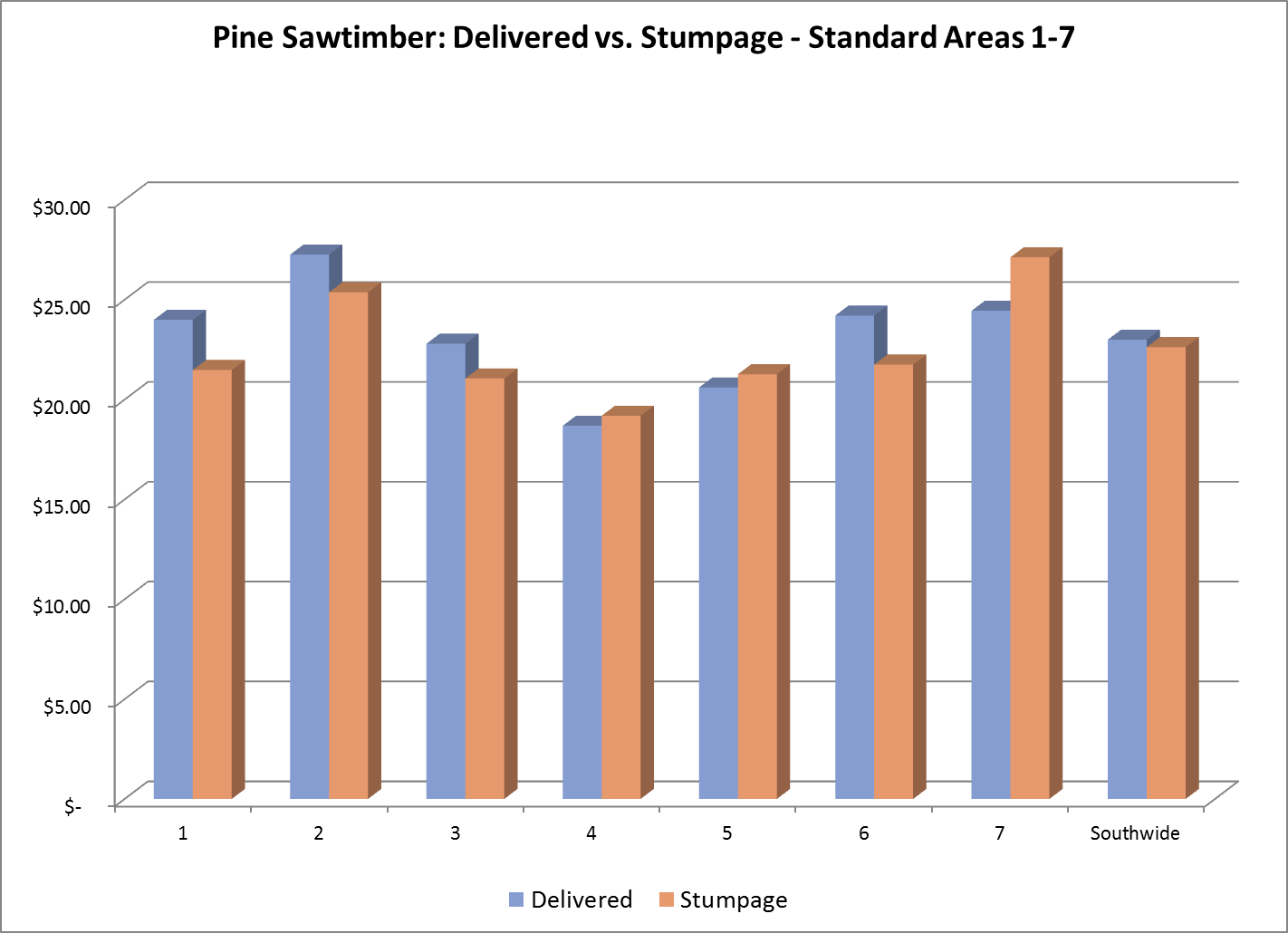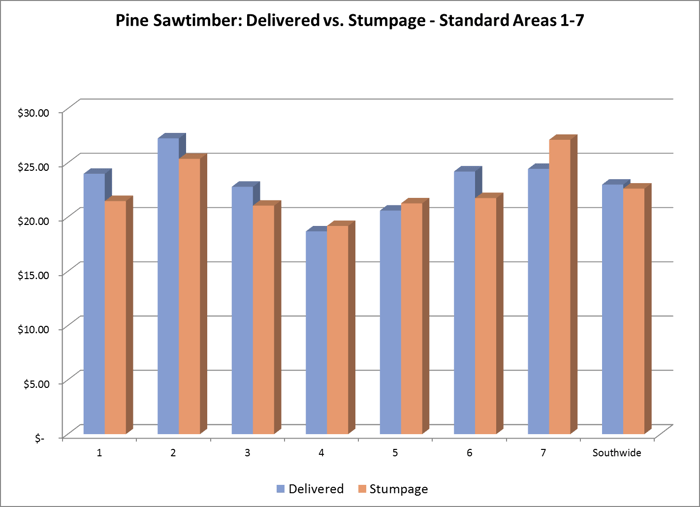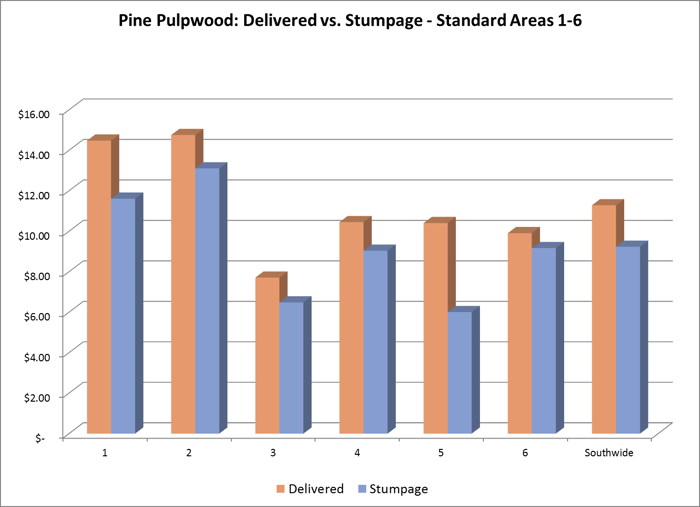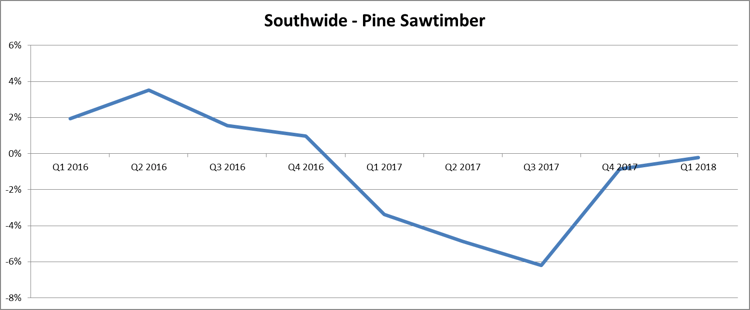3 min read
Stumpage or Delivered: Is there an Ideal Sales Model in the US South?
 Joe Clark
:
November 19, 2018
Joe Clark
:
November 19, 2018

Two basic sales models exist for individuals and companies that own and manage timberland for profit in the US South:
- Stumpage model: A company or individual sells timber “on the stump” to a logger or broker by either a bid sale or negotiation process. A vast majority of small, private landowners in the South sell their timber this way because it streamlines and simplifies the timber sales process, and they simply don’t have the available timber resources to meet the long-term supply needs of a large mill facility.
- Delivered Model: A company or individual sells timber directly to end-use/mill facilities, taking responsibility for harvesting and delivering the wood. In this case, the seller gets paid a stumpage price + the margin that would otherwise go to the logger or broker if they sold wood as stumpage.
Most landowners use one model to the exclusion of the other. Sometimes this is because of necessity—those with small holdings use the stumpage model almost exclusively because they do not have the leverage and resources that large landowners have. For large landowners, however, the choice is a strategic decision that reflects how they view the market for wood in their specific areas, as well as the resources they are willing to put into operating costs. Ultimately, choosing the right sales method is an operating decision that each individual or company must make by analyzing a number of factors that are unique to their geographic location and market.
The stumpage model is typically favored by landowners who have relatively small holdings and are looking to sell timber on a one-off basis. Large landowners such as Timber Investment Management Organization (TIMOS) and Real Estate Investment Trusts (REITS) also favor this model at times as they seek to eliminate the uncertainty of operating costs.
The delivered model is only a “real-world” option for large landowners who own and manage thousands of acres of timberland. It is favored by larger landowners that continuously harvest and deliver large volumes of timber, month after month and year after year. These landowners typically secure a higher-than-average delivered market price since they can commit large volumes of secure supply. This model allows large landowners to focus on net realization and minimize the costs of harvesting and hauling timber.
Each model carries inherent pros and cons for landowners:
Stumpage:
- Pros:
- Typically, there are more potential customers or “buyers” for wood.
- In strong stumpage markets, there may be dozens of active dealers buying wood on the stump, which helps companies maximize value.
- Cons:
- Coordinating several individual sales requires time and resources.
- Stumpage markets are oftentimes volatile and difficult to predict.
Delivered:
- Pros:
- Sellers can negotiate long-term supply agreements with mills.
- The model is more stable and predictable.
- Cons:
- Administrative costs for operating harvesting crews and equipment is high.
- Unpredictable expenses have the potential to negatively impact profits.
From a Statistical Standpoint, Which Model Does the Data Favor?
Forest2Market has the unique ability to help companies identify and evaluate those areas in the US South that are more favorable for each of these models—at a very granular level. With our robust stumpage and delivered price databases built on transaction-level data, we have the capacity to look at both stumpage prices and the net realization from delivered transactions across the region.
The charts below compare net realization from our delivered price database and stumpage price from our stumpage database for FY2017. When analyzing data for our standard areas for pine sawtimber and pine pulpwood in the US South, strong evidence suggests that the delivered model is more profitable for landowners. While this is the case when analyzing larger areas, a more detailed view produces different results, as some local markets clearly favor a stumpage model.


Although the broad results favor the delivered model in the US South, this does not mean that it can, or should, be the de facto model at all times and in all locations in the South. In the line chart below, a positive trend line demonstrates an advantaged stumpage market for pine sawtimber while a negative trend line demonstrates an advantaged delivered market. So, on a Southwide basis, the data clearly favored a stumpage sales model during 2016 but sharply transitioned to favor a delivered model during most of 2017 before returning to neutral territory in 1Q2018.

The data above is unique to the US South market and does not suggest that a delivered model can, or should, be the favored approach in other regions of the country or the world. Each specific landowner must develop an overall strategic approach that is most suitable for their individual area and their unique needs and goals. It is, therefore, more important to evaluate each tract of timber from a tactical standpoint within the context of the landowner’s grand strategy. In other words, sell timber on a delivered basis when it makes sense, and sell on a stumpage basis when conditions favor this model.
While there are pros and cons to each sales model (as outlined above), the strategic decision to favor one over another doesn’t mean that the opposing model would not be beneficial in the right circumstances. Large landowners should maintain enough flexibility to allow for tactical decision making to maximize profits on a particular tract of timber.
To improve that decision-making process, Forest2Market provides it customers with unique advantages when it comes to evaluating these models in their own backyards. Our customers are able to use real market data to more accurately and precisely evaluate whether a stumpage or delivered business model is the most efficient for their own needs, if they would benefit from blending the two models, or even switching models entirely.





